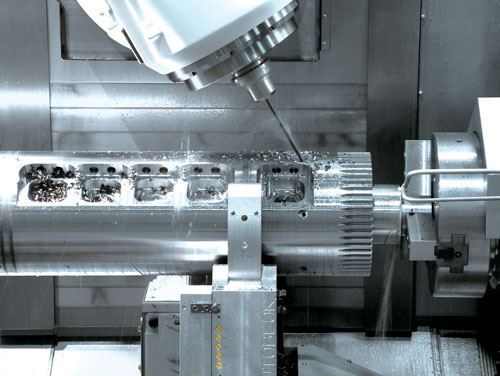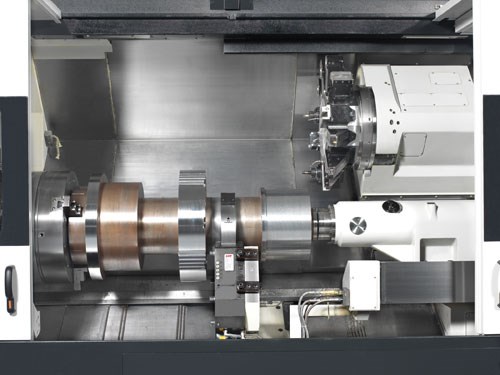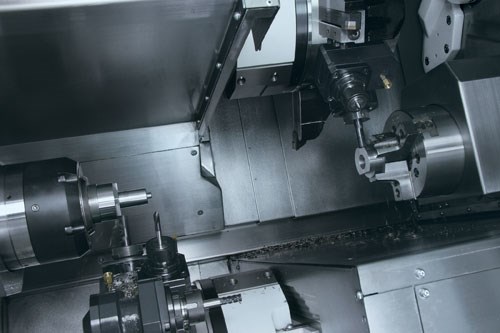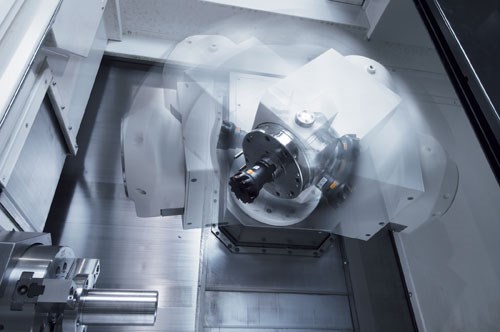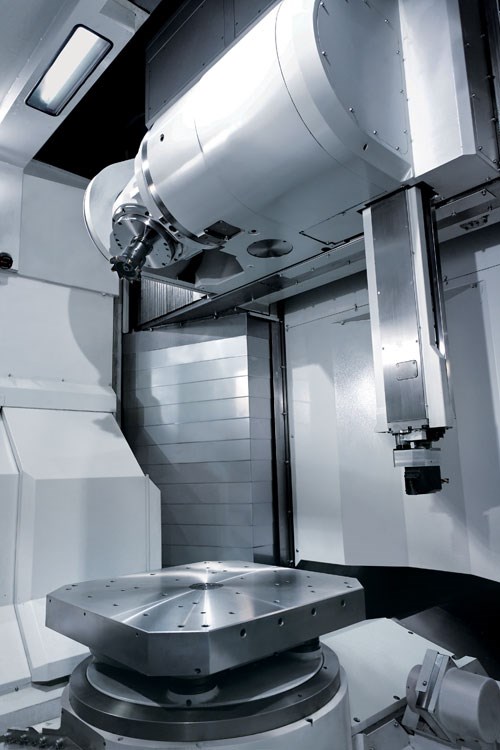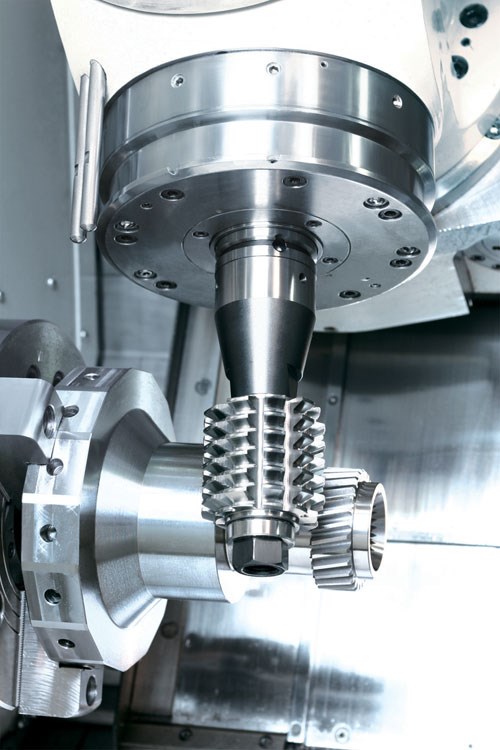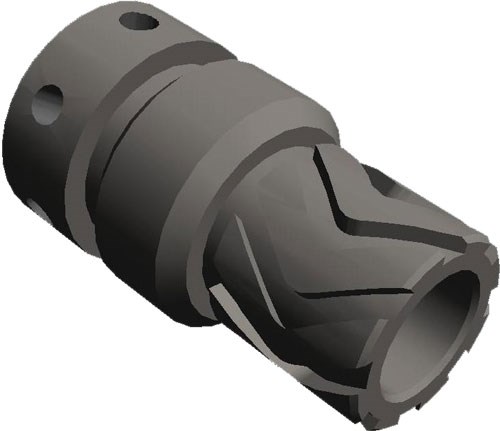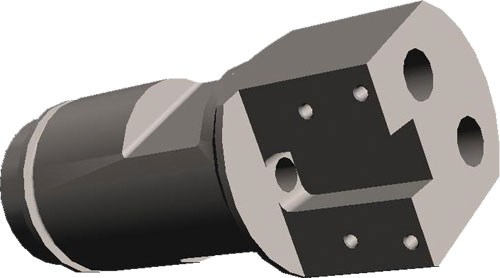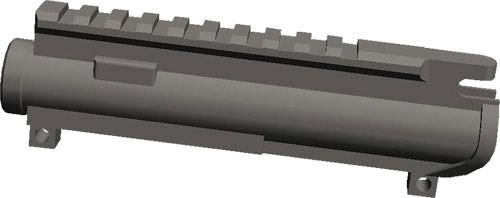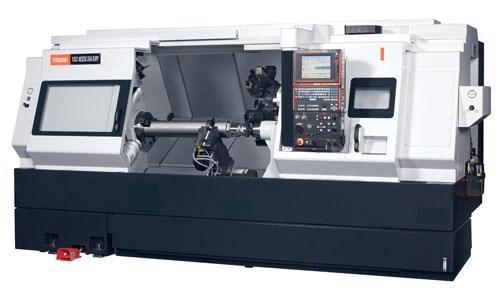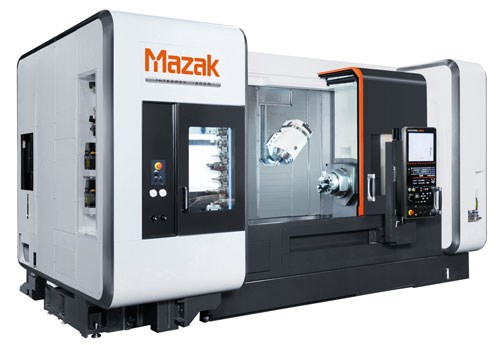Multitasking is Multiple Choice
Different levels of multitasking machine tools address different types of parts.
Share





One of the most significant decisions a machining facility can make when evaluating a particular production part is whether to use separate turning and milling machines, or whether to instead combine operations using a machine that is capable of multitasking.
The multitasking machine can deliver considerable savings. For the right job, the chance to perform most or all of the part’s machining in one cycle can dramatically reduce setup and other non-value-added time. Combining operations also reduces opportunities for error and eliminates work-in-process inventory that might otherwise linger between standalone machine tools.
However, making this decision involves more than just choosing whether or not to multitask. Shops often imagine multitasking in terms of just one particular type of machine—a CNC lathe with “live tool” capability in its turret. Some shops even evaluate multitasking exclusively in terms of this one option. That can be a mistake, according to engineers with the machine tool builder Mazak.
To be sure, a live-tool lathe is a capable machine. Yet this machine design has limitations, and those limitations might be significant to the part. Other multitasking machine designs have overcome those limitations. Given the variety of multitasking machines that are available today, it is now appropriate to look at any potential multitasking part in terms of the different levels of multitasking machine tool that might be used to produce it.
Michael Finn is a development engineer with Mazak, and Neil Desrosiers is a software developer with the company. Both work with customers to implement and fine-tune multitasking applications. For the shop not yet doing multitasking, they say, the most significant step is the commitment. Doing multitasking right could involve changing CAM software, or even starting to use CAM for the first time. Plus, because of the way a multitasking machine holds the part, the process on this machine might call for tooling and toolpath choices different from what the shop has used on a machining center. A shop turning to multitasking ought to be prepared for these changes. Once the shop is ready for this commitment, they say, stepping up to the optimal level of machine introduces just one more incremental factor.
Per Mr. Finn, here is Mazak’s view of the levels that characterize the choices in multitasking equipment:
Level 1 is the classic live-tool lathe, he says. When this machine finishes with turning a part, it can index the part for drilling operations. Milling is possible, too—albeit without the X-Y-Z motion typical of a machining center. The machine instead combines X- and Z-axis motion with the rotary motion of the spindle, or C axis. This effectively means that all milled surfaces have to follow the part’s axis, radius or circumference.
Level 2 overcomes that limitation by adding a Y axis. The Y axis permits off-center drilling operations, not just radial or axial holes. This freedom of motion also permits off-center, tightly toleranced milled features. A precision keyway is an example of a milled feature that becomes much easier to achieve with a machine at this level.
The Level 3 machine introduces a milling spindle comparable to that of a machining center. At this level, the machine begins to lose its resemblance to a lathe. Rather than a turret offering a rotary drive, this machine features a milling spindle that might lock its rotation to hold stationary tools for turning. If the machines at levels 1 and 2 could be called “turn-mill” machines, then the level 3 machine is better described as a “mill-turn.”
This is a significant change. Mr. Finn says replacing the turret with a spindle offers several advantages. One is milling power. The spindle lets the machine take heavier milling passes than what might be possible on a live-tool lathe. Another advantage relates to angled features, because of the way the indexability of the spindle provides for B-axis positioning. This allows milling and drilling at angles that have nothing to do with the part’s axis of rotation. In fact, a part produced on this machine might feature no turning at all.
A final advantage is the machine’s capacity for tools. While the space to hold tools is a limiting factor of a turret, a machine at level 3 can avoid this limitation by incorporating a toolchanger and tool magazine like a machining center. Mr. Finn says some plants choose this type of machine not because any part geometry needs it, but entirely because of the setup savings that result from being able to keep every necessary tool always in place within the machine’s magazine.
The machine at Level 4 then takes the tilting B axis and makes this axis capable of feeding and interpolating. While the level 3 machine has 4-1/2 axes, the level 4 machine is capable of full five-axis cutting. This might not seem like a dramatic change, but Mr. Finn says the difference brings parts to this machine that otherwise might never be associated with multitasking. Turbine blades are a notable example. Given the way a multitasking machine achieves five-axis milling—that is, by securing the part at both ends and rapidly milling all around it—a blade form can be milled out of barstock more quickly and accurately than it might be produced by a machining center in a more typical blade-machining process.
Together, this series of four different machine levels represents not only increasing sophistication, but also (perhaps obviously) increasing price. Mr. Finn says it is sometimes possible to save on price by making due with a lower-level machine than what a part’s geometry suggests. For example, a head attachment could let the turret of a level 1 or 2 machine mill or drill some unusual feature. His caveat in these cases is that the price savings sometimes don’t materialize, for any of various reasons. The head attachment itself might be costly; its lack of rigidity might limit throughput; and adding the attachment introduces a variable that can affect machining accuracy. By making the case that higher-level multitasking machines provide more value in such applications, the machine tool builder often finds itself in the position of urging first-time users forward and upward. This is ironic, he says, because with experienced users, the opposite effect is likely to occur.
With these users, he says the machine tool builder tends to be urged. When a manufacturer accustomed to multitasking is benefiting from a reliable, lightly attended process, that manufacturer is apt to want to include even more of the part’s work within the multitasking cycle. For this reason, there is one further level on the multitasking scale.
Level 5 multitasking machines add operations that go beyond turning, milling and drilling. These machines are almost always customized, because any facility’s ideal level-5 machine is likely to be unique. Machining operations that have been incorporated into these machines include grinding, honing, polishing and gear cutting. The starting point for these applications is usually a level-4 machine, which then gets augmented or redesigned as needed to achieve however much machining can reasonably be included within a single automated cycle.
Related Content
5 Tips for Running a Profitable Aerospace Shop
Aerospace machining is a demanding and competitive sector of manufacturing, but this shop demonstrates five ways to find aerospace success.
Read MoreMultitasking Machines Cut Days From Shop’s Setups
Adopting WFL Millturn machines enabled BWXT to condense operations and setups while also providing a simple way to simulate and secure processes.
Read MoreBuilding Machines and Apprenticeships In-House: 5-Axis Live
Universal machines were the main draw of Grob’s 5-Axis Live — though the company’s apprenticeship and support proved equally impressive.
Read MoreGrob Mill-Turn Machining Center Provides Flexible Performance
The G550T mill-turn universal machining center offers optimized milling and turning performance for a broad range of part materials in one setup.
Read MoreRead Next
Multitasking Calculator
Does it make sense to replace a series of separate machine tools with a single multitasking machine that performs turning, milling and drilling all in one cycle?
Read MoreRegistration Now Open for the Precision Machining Technology Show (PMTS) 2025
The precision machining industry’s premier event returns to Cleveland, OH, April 1-3.
Read MoreSetting Up the Building Blocks for a Digital Factory
Woodward Inc. spent over a year developing an API to connect machines to its digital factory. Caron Engineering’s MiConnect has cut most of this process while also granting the shop greater access to machine information.
Read More

